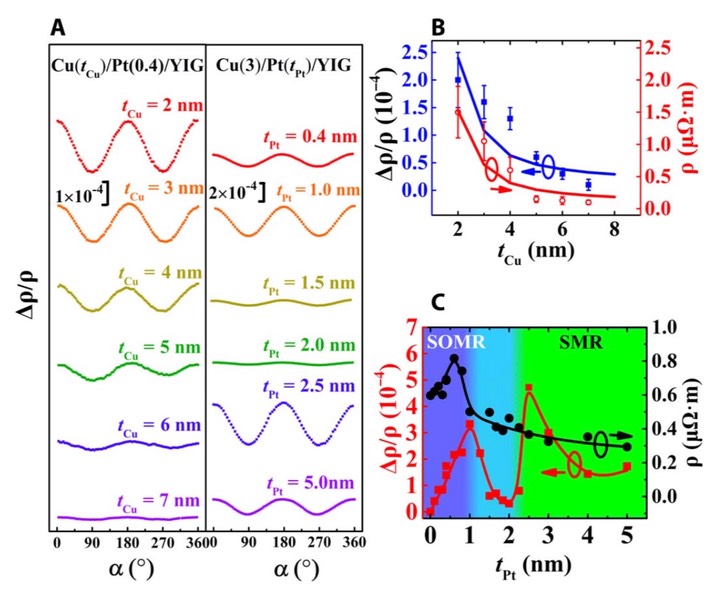The spin Hall magnetoresistance (SMR) is a magnetoresistance (MR) effect in a heavy metal/ferromagnetic insulator bilayer structure. In SMR, the longitudinal resistance of the heavy metal depends on the orientation of the magnetization in the ferromagnetic insulator, and more specifically depends on the projection of the magnetization to the plane spanned by the current direction and the interface normal. The physical mechanism of the SMR is the (inverse) spin Hall effect in the heavy metal. The spin Hall current in the heavy metal relies on the magnetization direction of the ferromagnetic insulator via the spin current absorption at the interface.
Needless to say, the SMR requires spin Hall effect, thus a heavy metal. In 2014, the former postdoc in our group, Vahram Grigoryan, predicted a magnetoresistance effect which is very similar to the SMR, but does not need a heavy metal. It works for light norma metal, such as Cu or Al. In such light metal/ferromagnetic insulator bilayers, due to the inversion symmetry breaking at the interface, an interfacial Rashba spin-orbit interaction (SOI) is inevitable. It is this Rashba SOI which leads to the new MR effect.
To confirm our speculation, we collaborate with the spintronic experimental group lead by Prof. Di Wu at Nanjing University. The structure was chosen to be Cu/YIG bilayer. In order to enhanced the Rashba SOI at the Cu|YIG interface, we decided to decorate the interface with scattered islands of Pt clusters. After several efforts, we did find the MR effect in the Cu/YIG bilayer with Pt decorated interface. With several control experiemnts excluding the possible SMR origin in Cu/YIG, we concluded this newly observed MR effect (see picture below) is the spin-orbit magnetoresistance (SOMR), predicted earlier by Vahram.

This work was published on Science Advances (link).
